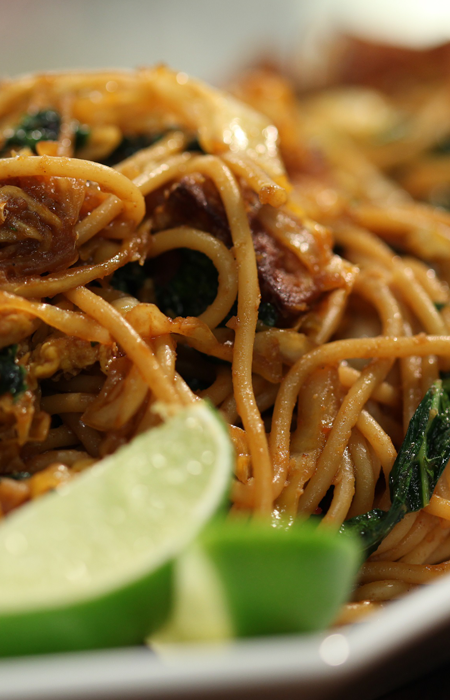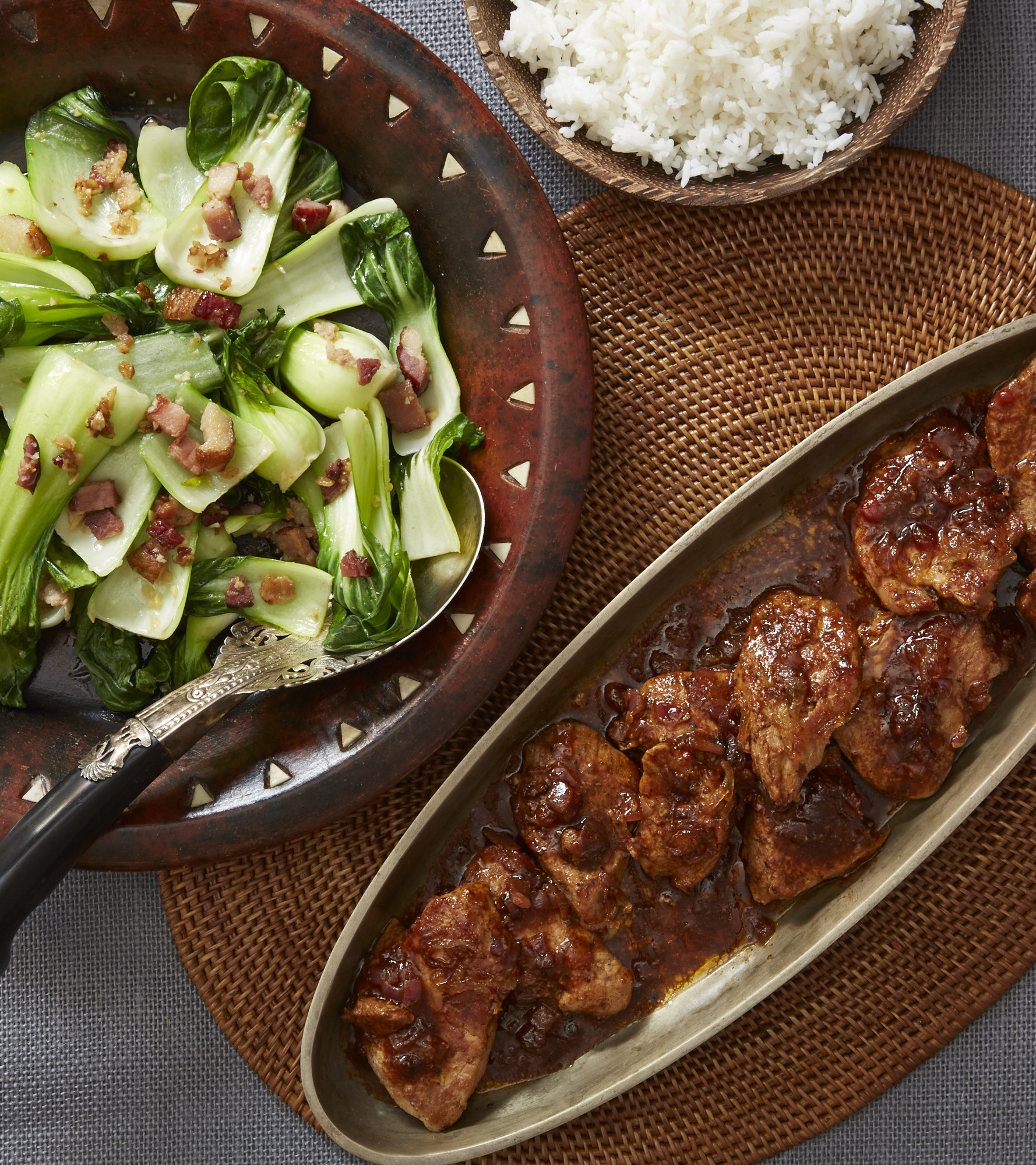Malaysian Mee Goreng is the quintessential Malaysian/Indonesian street food that has its roots in the Indian culinary menus. Local cooks have become such experts at cooking this so quickly that they can cut, chop the ingredients and do the frying while having a hearty conversation with their customers. Today, you will find mee goreng prepared in many ways, each way given a twist by the local culture. Enjoyed any time of the day or night, the main ingredients are vegetables and tofu with egg added at the end. When you are preparing mee goreng the dish fills the air with a tantalizing smoky fragrance.
In this recipe I have used the common yellow noodles also known as yakisoba noodles which you will find in the refrigerator section of any Asian supermarkets, and probably in major supermarkets. For the vegetable, I have paired the noodles with gai lan, also called Chinese broccoli. If you cannot find it, you can substitute collard greens, although they are not as sweet. Like most stir-fry dishes the success is having all the ingredients prepared in advance. This dish is so versatile, you may add any other protein source you want, whether it is chicken, prawns, turkey or beef for a heartier dish.
Serves 4
1 pound fresh yellow noodles also know as Yakisoba Noodles
4 tablespoons canola or peanut oil
6 garlic cloves, minced
2 large shallots, thinly sliced
2 tablespoons sambal ulek or sambal belachan
¼ cabbage, finely chopped
8 ounces gai lan (Chinese broccoli), thinly sliced
8 ounces fried tofu, thinly sliced
2 tablespoons soy sauce
4 tablespoons sweet soy sauce
2 large eggs, beaten
- Gently rinse the noodles in a colander under hot running water, and set aside to drain.
- Heat a wok or a large deep skillet over medium heat for 40 seconds. Add the oil around the perimeter of the wok so that it coats the sides and bottom. When the surface shimmers slightly, add the garlic, shallots and fry until golden and fragrant, about 2 minutes.
- Add the sambal and fry for another for 30 seconds until the oils appear on the surface and fragrant. Add the cabbage, gai lan and tofu and fry for 1 minute until the vegetables are slightly wilted.
- Now add the drained noodles and toss well to combine with the vegetables, carefully mixing to prevent the noodles from breaking, stir-fry for 3 minutes. Add the soy sauce and sweet soy sauce and continue to mix well.
- Now push the noodles to one side of the pan, add the beaten eggs on the opposite side across the wok to create a thin layer and immediately bring the noodles over the egg. Do not stir or mix at this point, allow the egg underneath the noodles to cook for at least 30 seconds undisturbed.
- Raise the heat to medium high, then gently lift the noodles from underneath and stir-fry continuously until the eggs are fully cooked, about 2 minutes. The noodles will no longer appear wet from the eggs when cooked. Continue to stir- fry for 1 to 2 minutes, then taste, and adjust with sweet soy sauce if needed. Remove from the heat.
Serve immediately.




